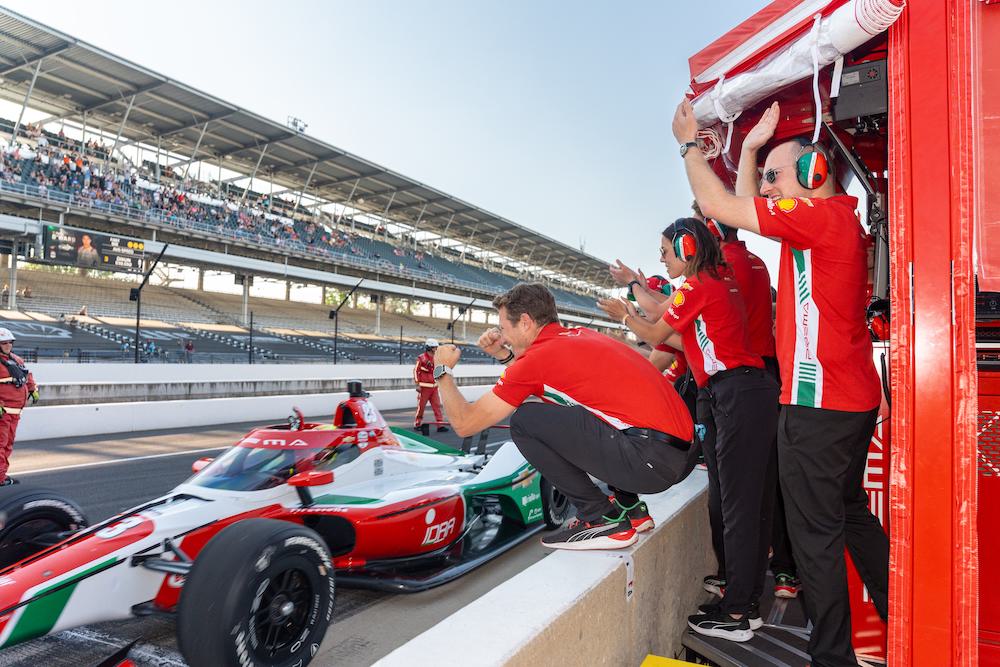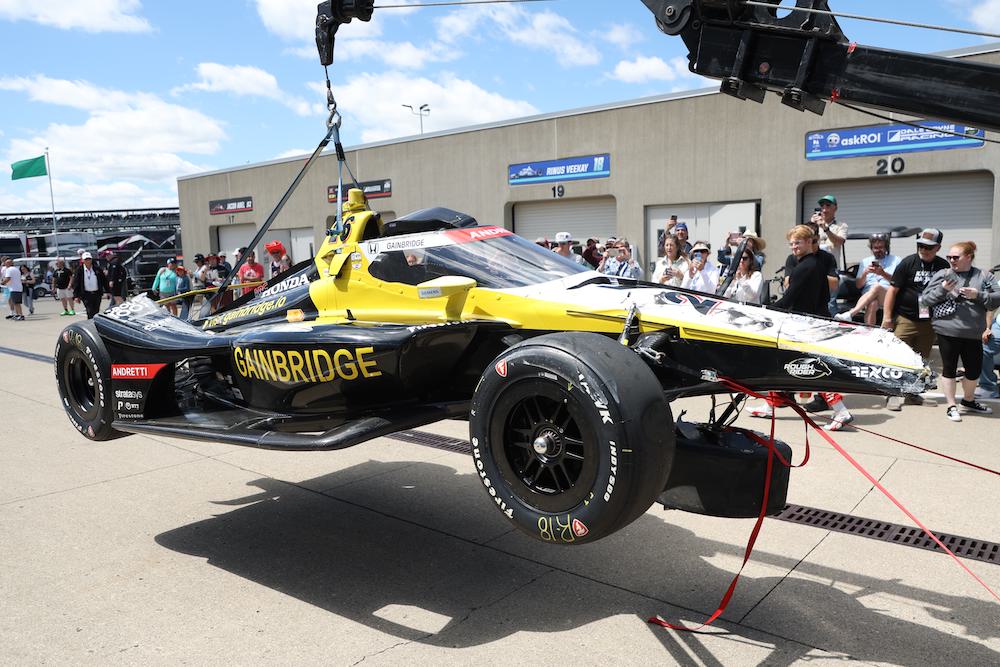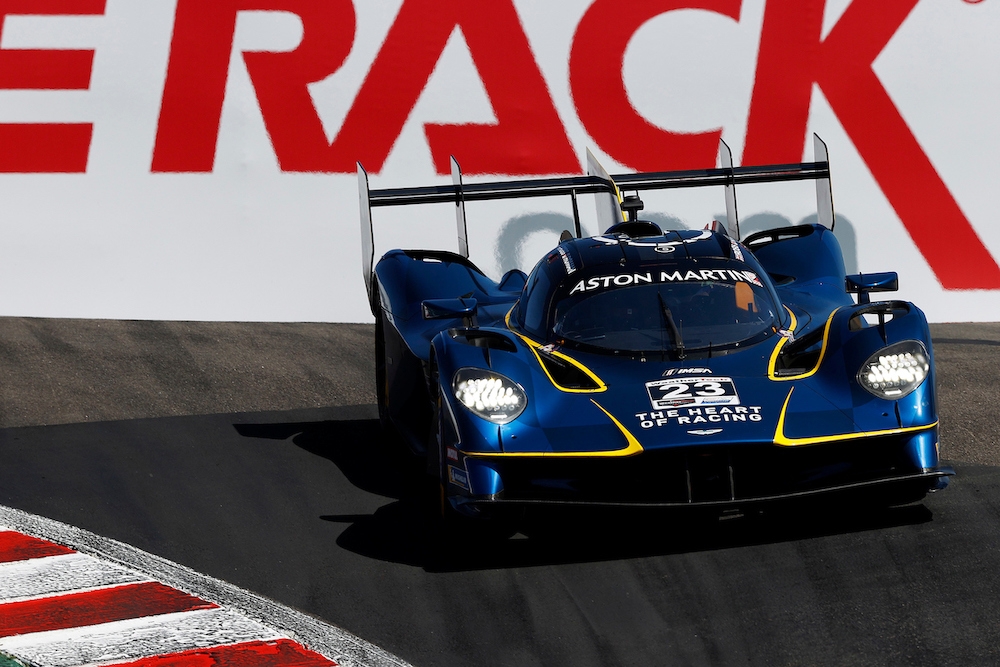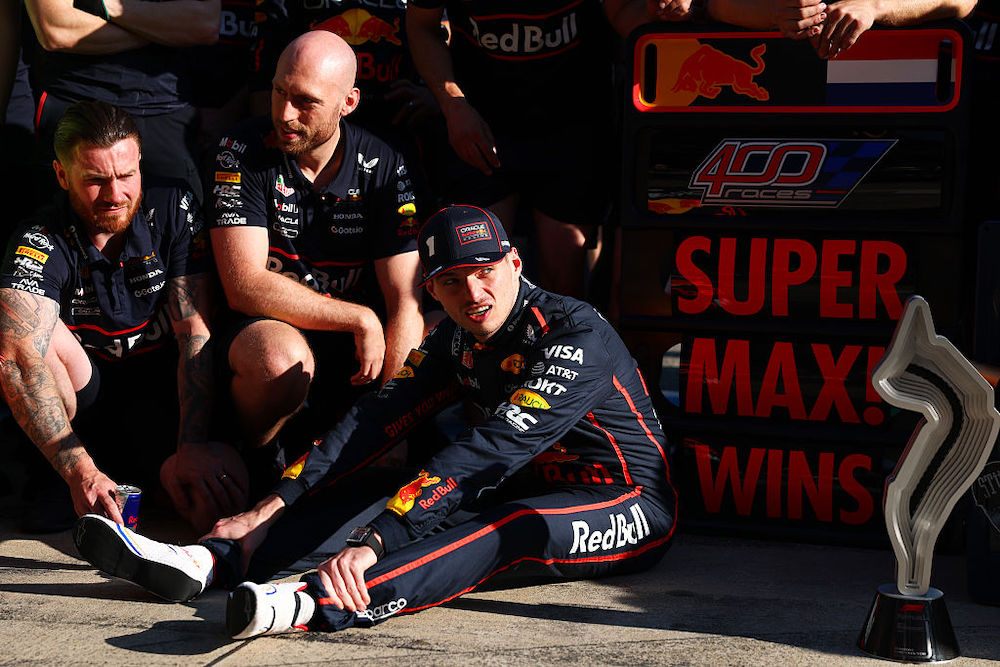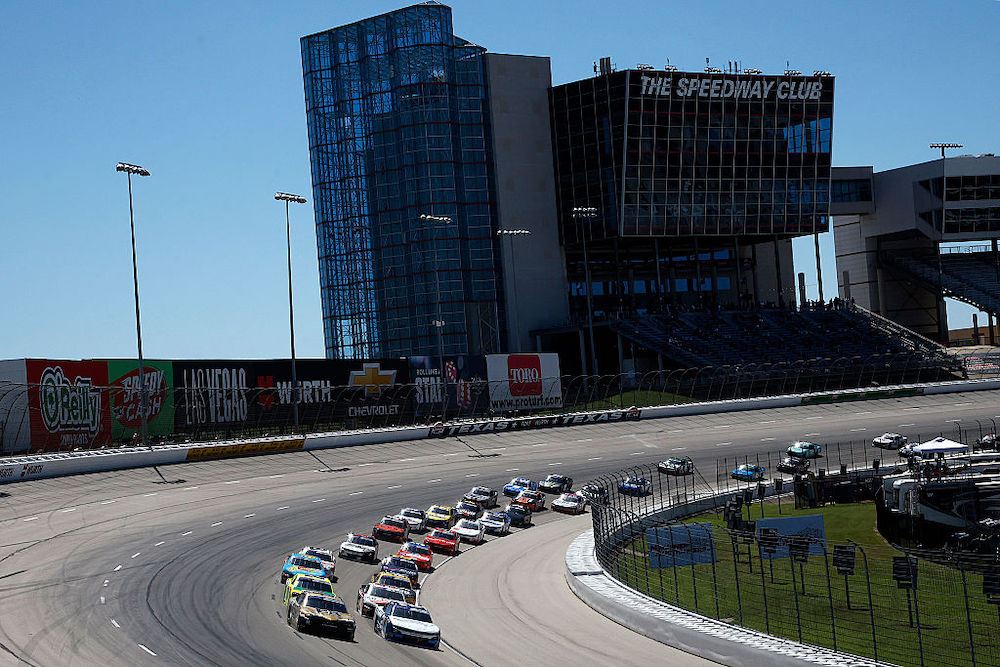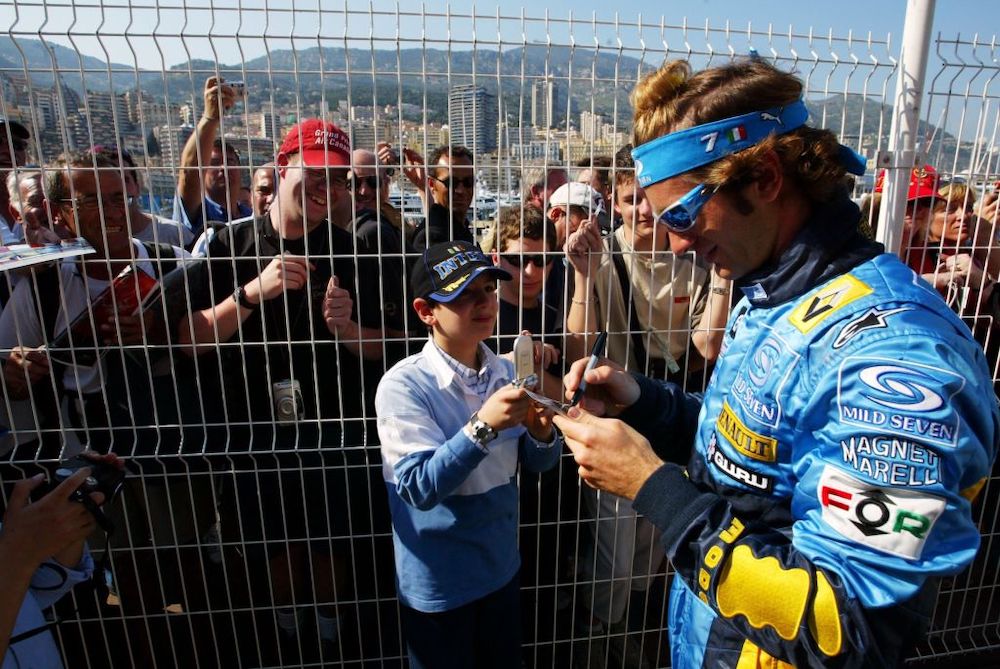Welcome to the RACER Mailbag. Questions for any of RACER’s writers can be sent to mailbag@racer.com. We love hearing your comments and opinions, but letters that include a question are more likely to be published. Questions received after 3pm ET each Monday will be saved for the following week.
Q: I am sure you will get multiple questions regarding the Penske violations. You are my North Star when it come to IndyCar reporting so I wanted to get your thoughts. I know there is no hard evidence that the attenuator was illegal on Saturday, but they are starting to show a history of doing the wrong thing. Should they have been pushed back to spots 31-33?
Also, I would guess the rule book is significant enough that it would be virtually impossible to have memorized, but how many people work the inspections? Maybe each individual must be responsible for certain areas of rules (maybe it is already that way)? Just seems like it would be difficult to try and catch everything.
Lastly, does this all fall on Tim Cindric?
David N
MARSHALL PRUETT: Here’s where we have some interesting applications of the rule book. By rule, yes, the two Penske cars were allowed to keep their Fast 12 spots as a result of their speed on Saturday. And the speeds were kept, according to IndyCar, due to not being found in illegal spec on Saturday.
That doesn’t mean they weren’t illegal on Saturday. That means IndyCar didn’t penalize the illegality. Multiple teams told me they saw the illegal parts and alerted the series prior to Sunday and no action was taken.
A technical director from an opposing team told me Penske’s use of modified attenuators is nothing new to the paddock and they believed it had just become an accepted thing that Penske did that was ignored by IndyCar technical inspection.
Where this has merit is in how the rest of the paddock hasn’t followed suit by modifying their attenuators. If the other teams thought they could get through tech with modified attenuators, they would. But they didn’t, which lends credence to the belief that it was viewed as a Penske-only exception made by technical inspection. That’s telling.
Then IndyCar decided to act on the illegal Penske attenuators on Sunday. Why Sunday and not Saturday? Or the days prior when the parts were on two of the cars? Or at the Indy Open Test in April? Or in 2024 when the race-winning car carried the modified attenuator? That’s for IndyCar to answer. I’ve asked and await the opportunity to hear what might be said.
And then on Monday, IndyCar chose to ignore the Fast 12 protection rule for the 2 and 12 cars and use a catch-all rule that lets them vacate other rules and apply penalties and fines.
Any suggestion that the tech inspectors didn’t know whether modifying the attenuator was legal or illegal is pure fantasy. This has been a Penske ordeal since Sunday, but that’s only half the story, and frankly, it’s not all that interesting to me. Team Penske, doing something it shouldn’t – no matter how small or stupid or as obvious as modifying something that everybody could see – is old news.
The apparent and ongoing failure of technical inspection to actively enforce the rules it writes is the real story. IndyCar’s rules are created by the people in charge of policing the cars. This isn’t a case of having to try and memorize a book written by someone else. This is the handbook they wrote for themselves, to set the technical standards they want to see upheld by their competitors. And if anyone wasn’t sure about attenuators, all it took was opening the rule book they wrote and reading the section on what can and can’t be modified. There’s no mystery here.
If a Rahal car comes through with a plain-looking attenuator, and a Penske car rolls through with a beautifully blended and smoothed and shiny clear-coated attenuator, that’s the time to do a simple compare and contrast of the differences between two spec components that have been presented in blatantly different visual states.
It’s the old Sesame Street game of “which one of these is not like the others?”
If the Penske ones are not like all the others, over and over again, ask questions. Consult the rule book, if needed. The chances to play the Sesame Street game were offered up on so many occasions since 2024, but technical inspection chose to fail at that game until Sunday. The reason behind that choice is what I want to know more than anything else related to this incident.
Why did Penske modify the attenuators and why weren’t the modifications consistent on all of its cars? Said another way, why, when I went back and looked at all my footage of the cars from the April test through Sunday, was the No. 3 car found with a compliant, non-blended attenuator while the Nos. 2 and the 12 were in illegal form the entire time? Like hearing from IndyCar, I hope to hear from the Penske team to find out.
As for Tim Cindric, yes, he’s the top person in charge of the team, so that’s where the buck stops, but I don’t believe for a minute that he, or Roger Penske, or anyone else at the team cooked this up as a masterful attempt to cheat. This wasn’t some stealthy item buried in the fuel tank that gave Penske drivers an extra gallon of fuel to use that was uncovered by technical inspectors. This was as obvious as it gets, in plain sight.
Which supports the suggestions coming out of the team that the modifications were driven by cosmetic motivations and not a scheme to achieve aerodynamic perfection. But the motivation behind ignoring the rules doesn’t matter, does it?
Reminds me of a time when I saw a court show where the judge stopped the proceedings when a line of detainees were being cycled through for their hearings. One was asked to plead guilty or not guilty, and he responded by saying, “Guilty, but with a reason.” He then gave an excuse for why he did whatever he did, and the judge ignored the answer and went with guilty. The next person came up and was asked to plead, and used the same “Guilty, but with a reason” answer. That’s where the judge stopped everything and angrily said, “There’s ‘guilty’ or ‘not guilty.’ There is no ‘guilty with a reason.’”
As a byproduct of illegally modifying components that weren’t allowed to be modified, what the team did was the definition of cheating. That part needs to be clear. Even if the motivation was something as simple as making the attenuators smoother and prettier, the end result of their actions was to do something to their cars, in a tightly controlled spec series, that should not have been done. That their rivals weren’t doing. Guilty or not guilty. There’s no ‘guilty, but with a reason.’
Another item that needs to be clear: It’s not what they did, but the fact that they did it. And that THEY did it. The team owned by the guy who owns the series, caught again. Huge violation of trust. Again.
Whether it made their cars faster, slower, or had no performance gain whatsoever is immaterial. The act of modifying a part that is banned for modifications in the rule book is illegal. Putting those modified parts on the cars, and using them in competition, is cheating. Back to the Sesame Street game; if one team is doing something all the others aren’t because they know they shouldn’t, that one team isn’t playing by the rules. It’s the most basic form of cheating, even if there’s a great reason for it.
It’s the act of not complying, not how far out of compliance they were. This was intentional, and repeated, and done over a long period of time. And IndyCar’s technical inspection wasn’t oblivious to this until Sunday. Something happened – something triggered a newfound willingness to call a foul after a year of refusing to blow the whistle – and that’s about all we know for sure.
What this has exposed, again, is the appearance of a team that’s not willing to apply the same internal checks and balances as others to ensure it complies with the rules. And that just can’t happen when the team and series are owned by the same person. Team Penske needs to be the shining example of competitive and compliance excellence. This is just sad.
Q: Please explain what options the teams and drivers have for setting up hybrid usage in 500 qualifying and race. I understand the basics of how the system works, but TV made it sound as if there were algorithms that had to be chosen before running. Are capacitors charged before leaving pit lane? Are the regeneration and deployment rates set before the run? Are those rates totally open to the teams within the capabilities of the unit? Is this by rule, or limitations of the device? (TV made it sound as if the ‘trickle’ approach or full single deployment was a choice made prior to the run.)
What choices are available to the driver once the run begins? Will any of this change for the race?
Jack
MP: The trickle was a qualifying option, which was preset before the runs and could not be changed during the runs. And vice versa with doing manual deploy; whatever you chose you had to stick with for the run.
The batteries are charged before they roll out. In the race, there’s two regen options with automated and manual. Both can be activated so regen happens if a lift of the throttle happens, for example, and drivers can press a button or pull a paddle to charge. On deployment, it’s manual only. Drivers do not have to use the charge all at once; if a driver wants to release 100-percent, they can. If they want to do 25-percent, they can.
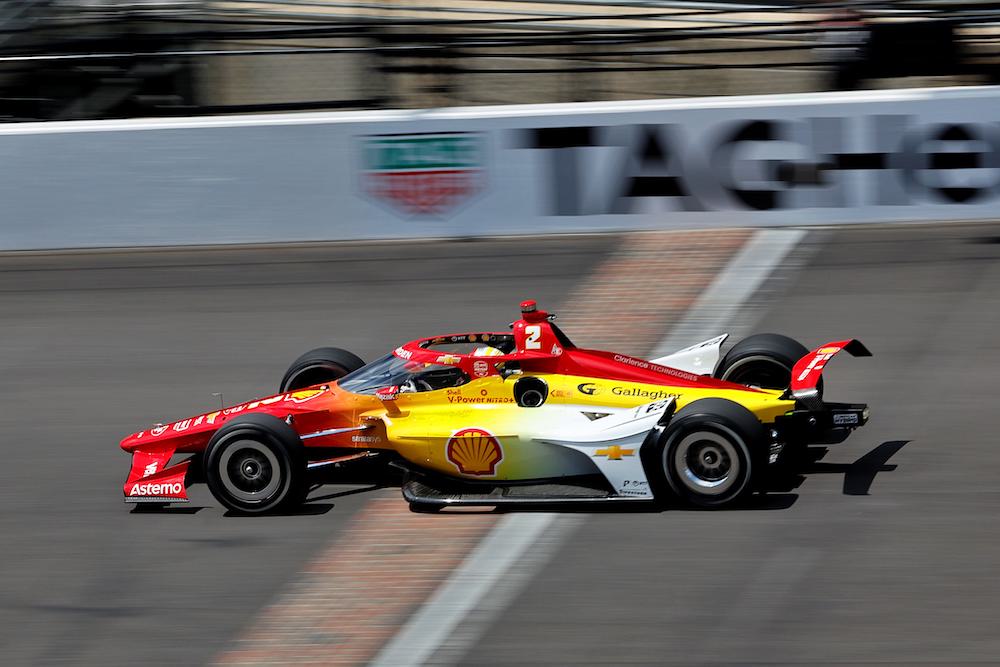
We’re only going to run one Penske attenuator photo in this week’s Mailbag. This is it. Enjoy. Paul Hurley/Getty Images
Q: During Indy 500 qualifying, why do drivers exit Turn 4 and then swerve toward the inside of the track and then swerve back to the outside of the track entering Turn 1 instead of running a straight line? Seems like a shorter distance would produce a lower lap time.
Tire management allows seems to be an issue in the races. Why do drivers light them up exiting the pits? Wouldn’t an easier exit save some rubber for race action?
Ken, Lockport, NY
MP: It’s speed vs. distance. The cars are setup to turn hard left in the corners, and when they come out of the corners, they want to veer left on the straights. So yes, while they take a slightly longer route by not going straight, they avoid fighting the car pulling to the left, and that improves speed by reducing tire scrub. Tire life with racing slicks is different than tire life on road cars with tread depth. There comes a point, usually, where the special chemistry in the rubber – the compound – loses its ability to adhere to the ground as well as it did when it was new. It isn’t about thickness of the rubber.
Drivers light the tires to quickly accelerate and to generate heat in the ‘cold’ tires so the heavier rear of the car has grip.
Q: What is Bobby Rahal doing to his kid? Every 500, Graham has the worst car in the field. Maybe Bobby needs to get out and sell the team. Look at the clear message BMW is sending.
David Tucker
MP: Last I checked, Graham was a grown man with a wife and kids and the freedom to drive or not drive race cars. What’s up with the friendly fire for Bob?
Q: I’m trying to understand the fuel strategy for the 500. Would you be willing to share:
- Expected laps on a full fuel run for a car leading 100% of the time.
- Expected laps on a full fuel run for a car conserving fuel in the draft 100% of the time that is not using any hybrid power.
- Expected laps on a full fuel run for a car in the draft that is aggressively using/deploying/regenerating hybrid power (possibly attempting to move forward through the pack).
- Traditionally the 500 has stints limited by fuel, not tire life. Any chance tire degradation is so high that stints are limited by tire performance?
- What else should someone know who wants to watch the race from a strategist’s perspective?
Kyle
MP: Hard to give answers before we hit Carb Day. Great questions, but the fuel side is a lot of guesses and approximations until true race-day running is seen on Friday. On tires, yes, there’s a new wrinkle in the possibility of tires surrendering sooner than usual at the 500 due to the weight.
Q: IndyCar needs changes, so here is an idea. If a team budget is $8 million (estimate) then how about each team can spent it anyway they want? If a team wants 10 sets of tires for a weekend and they want to spend more of the cap on tires, then let them. If a team wants eight engines instead of four then let them, as long as it doesn’t go over budget.
The restrictions on IndyCar was created to limit cost, but that hasn’t worked out so well for us as fans and action on the track. Stop telling teams how they must spend money. More rules and restrictions don’t equal better racing.
Dan
MP: Completely agree. It’s an interesting proposition, Dan.
Q: Yet again Marco Andretti showed up for his annual outing at the 500, only to scrape in at the back of the field. And, if his form from recent 500s continues, he will be an also-ran in the race itself. He is doing no good to his own or his family’s reputation with these displays, though, puzzlingly, he seems to have his supporters.
How long can they, and he, continue thinking these Indy 500 one-offs are a worthwhile endeavor?
A. Jenkins, Ontario, Canada
MP: This is the first time, since he went to an Indy-only plan, that it has felt like more of an obligations – that’s just what you do each May – than a raging need to race. I could be totally wrong. And with his dad no longer involved, I’m sure it feels slightly less like home. I’ve always liked Marco, and hope he reaches appoint where Indy is a highlight, no a sense of family duty to uphold.
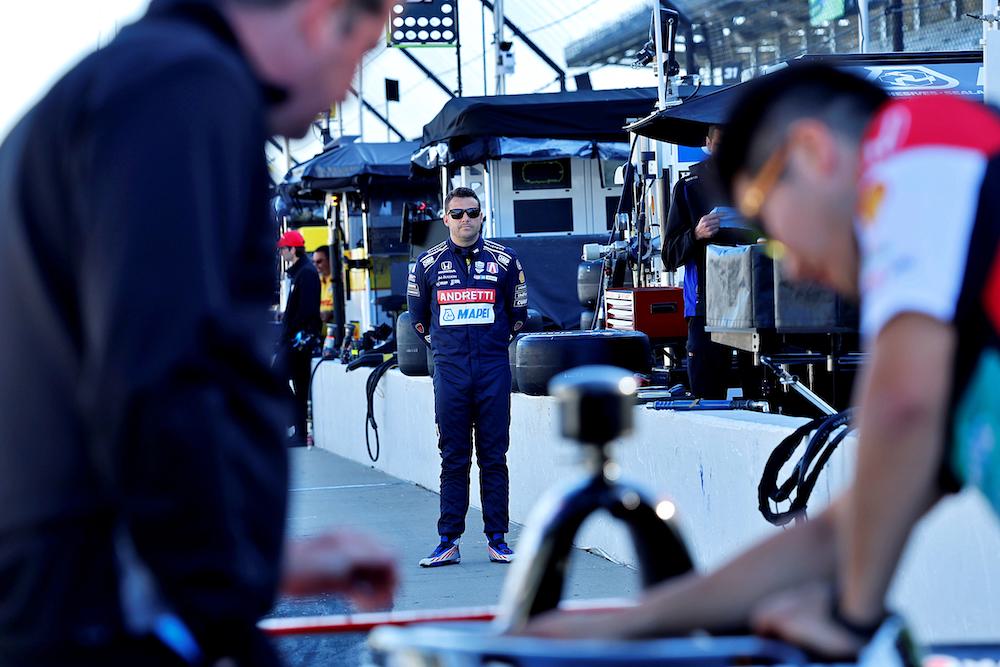
Marco’s flying the family flag alone at the Speedway now. Paul Hurley/IMS Photo
Q: It’s interesting to me that with all the engineering, simulation and brainpower that a clear method for using the hybrid hasn’t yet been identified as being optimal. That will almost certainly be figured out soon, then it will be just another spec aspect.
What I don’t like seeing is all the wheel and tool movements required at over 235mph with walls staring at you, and from the interviews, it seems the drivers don’t, either. Is this a situation where the marketing factor outweighs safety?
Mike, Elkhart Lake, WI
MP: I’ve yet to see or hear a driver say they crashed or almost crashed at Indy due to hybrid-related distractions on the steering wheel, so no, marketing isn’t outweighing safety. Not yet, at least. Teams have the same cars with the same suspensions and transmissions and so on, and they all use different gear ratios and choose different angles and geometries, so I’m not surprised to see teams finding their own preferences on hybrid use.
Q: Over the last few years I have found myself really starting to pull for Ferrucci. When I heard about the Malukus/Foyt/Penske arrangement, my first thought was there is no way Ferrucci will be allowed to outperform Penske’s guy. Bad optics. Please tell me this is not being clearly illustrated at Indy.
Mark, Kansas
MP: There are no team orders at Foyt, so it’s not a thing. But the immensely talented young race engineer James Schnabel from Penske who was with Santino last season was moved to David’s car, which obviously meant Ferrucci needed to start a new relationship with a new engineer, and I think it’s that process, more than anything, that’s prevented the momentum from 2024 to carryover without interruption in 2025. Santino’s a badass. Can’t wait to see what he has for us on Sunday.
Q: What happened to the flaps that used to be on the cars to prevent airborne cars at Indy? There are too many airborne cars this year! This is not good!
Lenny Mishik, Fairview Park, OH
MP: Flaps are still on the cars. But they aren’t magic devices that can defeat physics.
Q: I found myself watching the 1982 Indy 500 telecast, and the commentators mentioned early in the race that Rick Mears had broken his fingers in the weeks leading up to the 500 while working on a Model A at home. I didn’t know he was gaining on Gordon Johncock in the closing laps of that race with an injured hand. I’m wondering what the phone call to Roger Penske was like to tell The Captain what happened.
A couple of questions came to my mind. Do driver contracts typically include clauses that say, “Don’t do anything stupid” or “Stay away from specific training exercises like a mountain bike”? What’s been the most unusual way you ever heard of a driver being injured away from the track?
Brandon Karsten
MP: Very common for the well-paid drivers to have limits placed on their action sports activities (no sky diving, swimming with sharks, etc.) for some of the older and more traditional team owners. And then you get a Kyle Kirkwood who’s in the water every day, spear fishing and Lord knows what else, who won’t be tamed. I worked with a driver who was fond of cheap beer and our team owner tried to limit how much he could drink during race weekends. One of those things that’s hard to police, so it was more of a message being sent in the contract than anything to be enforced.
Q: What on earth is Chris Myers doing as host of the 500? Shows me FOX is not serious about making the beat possible broadcast. He’s been simply horrible during qualifying weekend, with so many errors – he called it the Daytona 500 twice.
Mike, Elkhart Lake, WI
MP: But isn’t that what most networks do by taking their figurehead announcer and dropping them in to lead the big game or race in some capacity?
Q: I’m curious about what teams are allowed to do between Indy 500 qualifying and race. Will Andretti and MSR send the backup cars to the shop to try and better prep the backup bodywork for the race, or is that not allowed?
John, Columbus
MP: They’d need special dispensations to leave the property with the cars. They can do anything to the cars they’d do at any other point in the event. The work tends to happen in Gasoline Alley.
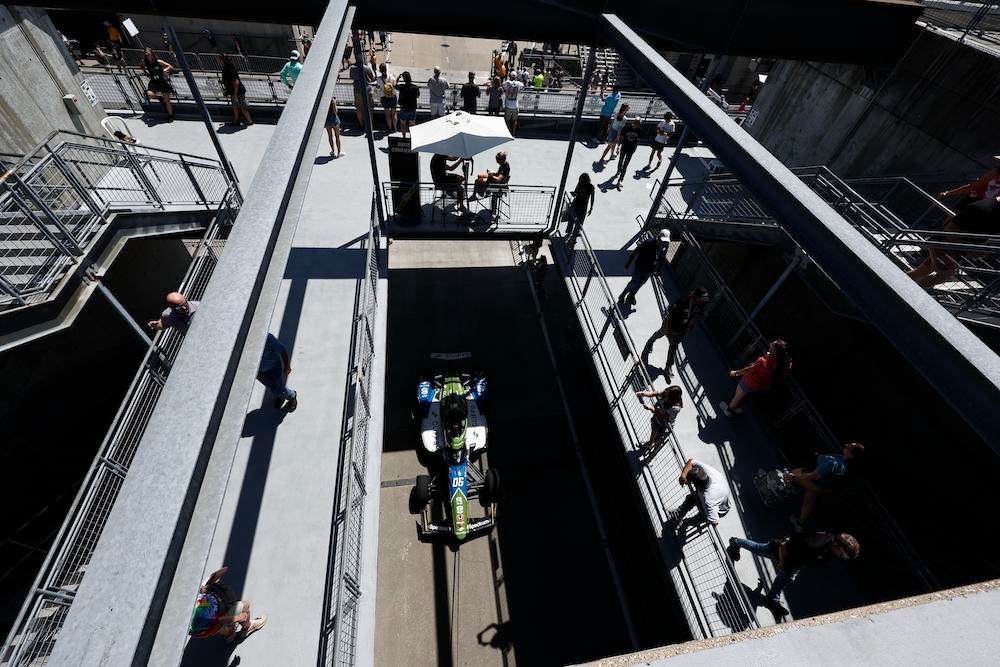
Teams are free to work on their cars in Gasoline Alley ahead of the 500. Chris Jones/IMS Photo
Q: As annoying as it was to have NBC seemingly rely on bringing in NASCAR talent to legitimize Indy, at least they knew where they were. Hearing Chris Myers remind Colton Herta during an interview that it was Herta’s seventh Daytona 500, which Colton immediately corrected, was even more frustrating. This after Saturday’s qualifying broadcast that completely disregarded at least three drivers’ runs during Myers’ and Danica Patrick’s overlong intro. Can’t even split-screen it, guys?
Then Myers tosses to commercial break, promising to bring the filling of the 33-car field for next Sunday’s Daytona 500 – Indy 500. Ouch. Here’s hoping they take it a little more seriously on race day.
Henry, Richmond, VA
MP: Let’s go ahead and take what I just told Mike and light it on fire. This sounds like Troy McClure from The Simpsons has come to life and is hosting the Indy 500.
Q: My questions are pretty simple. Shwartzman has talent, and we all accept that. But the setup and performance of his car in qualifying – that looks like the influence of Mike Cannon. Am I wrong? Good for Shwartzy and it made for good TV.
Was Dale Coyne calling Mike Cannon to ask when his extended fishing trip will be over? I hate what happened for Dale’s team. They are scrappy and I love to cheer them on.
Sato: The guy just continues to cement his legend at Indy.
John Balestrieri, Waukesha, WI
MP: Mike wasn’t involved. The team hired Newgarden’s 2023 Indy-winning race engineer Eric Leichtle for the race.
Q: This year Indy qualifying had it all. My wife enjoyed so much she thinks it could be better than the race.
RLL hires Sato. Sato and crew proceeded to spank his teamm ates and all but one racer in qualifying. Why is there such an imbalance between Sato and Graham Rahal? Is it his skill level at Indy and skill alone? Can anyone, including Graham, explain his falling down these last couple Indy 500 qualifiers?
Penske: Was that not a blatantly cheating offense and getting busted at it? Who makes that call within Team Penske? How did one car pass inspection but not the other? The attenuator is a spec part not to be altered, so they say.
Hybrid: Why was it not deployed more at the beginning of run to take advantage of fresh tires?
PREMA and Shwartzman were spectacular! Is this not an opportunity for IndyCar to cash in on this splash of success and throw IndyCar in the spotlight a little bit more?
Timothy S., Nashville, TN
MP: Takuma is better at Indy than Graham. Nobody is saying who green-lit the alterations. Because you don’t need more speed when you have maximum speed. You need it when you’re losing speed. Nobody here knows who or what a PREMA is, or about Robert, so I don’t see how unknown people would bring the series into the spotlight.
Q: Jacob Abel in the No.51 car failed to qualify for the 500 in what was a very cool livery. At what point does Dale Coyne start to take things seriously? Not to bash him or anything, but he didn’t look the least concerned that one of his cars was not making the show when he was being interviewed during the Last Chance Qualifying.
The No. 51 car is sitting dead last in the full time entry standings. Does Coyne take a gamble and bring in a veteran driver to get some much-needed points? The driver doesn’t necessarily have to light the grid on fire, but if they are able to bring the car into the top 15 more often that would certainly help…
Not that awesome watch designer Stefan Johansson
MP: If you ignore the valid contract executed between the Abels and Coyne to provide a car for Jacob in exchange for a full budget to run the car, and Dale wants to pay for everything to get a veteran driver, this would be possible.
Q: Robert Shwartzman’s pole victory was a shocker because they didn’t look like they were going to have both cars in the field the way they started out on Tuesday. In Teo Fabi’s case people kind of knew that he could be the first rookie driver to win the pole because he was more accomplished during his stint in Can-Am.
Also, Penske being caught cheating again is so not good for series if it wants to keep Honda and have other engine manufacturers come in. Maybe there should be an independent committee that needs to step in and put a stop to these cheating scandals from the Penske team.
Alistair, Springfield, MO
MP: It’s already in the works.

The modern day Teo Fabi. Joe Skibinski/IMS Photo
Q: Are IndyCar tech inspections video recorded for later review? If not they should be going forward. It’s hard to believe the attenuator infractions were arbitrary. as Tim Cindric put it. This situation creates more questions than answers about the waning integrity of Team Penske, and now also IndyCar tech inspections. This is what happens when all workflows ultimately report to one man. As a long-time IndyCar fan, I have serious doubts about the integrity of the series moving forward.
Rob Peterson, Rochester, NY
MP: Not that I know of on the video recording. This is two stories of their own: Penske’s two-season use of illegal attenuators, and the acceptance that allowed it to happen on the inspection side.
Q: What has been the paddock’s reaction to this new round of illegal Penske cars?
I thought this conflict of interest could be managed, but I was wrong. Team Penske has had multiple cars DQed from official sessions in consecutive seasons. The series’ integrity has been called into question both times.
Is anyone within IndyCar Series leadership willing to say that the emperor isn’t wearing any clothes?
Kyle
MP: Serious outrage from the owners who’ve called, as well as at least one manufacturer.
Q: Where are the pitchforks for Helio Castroneves and Conor Daly being in the LCQ? Both failed tech inspection as well. I’m not saying Penske doesn’t deserve considerable animosity, but they’re not the only team that lost a spot in line/times this weekend.
On an unrelated note, I hate the rule that you don’t have a time if you’re not in the field. Abel is in if he keeps his time. Nobody did it on Saturday this year, but you can pull your time and be the last one to run and be P30 if you were already in the field. I would love to see that rule changed.
Ryan, West Michigan
MP: Why would there be pitchforks for any team that failed pre-session tech? Happens all the time. What doesn’t happen all the time is being failed for intentionally modifying something they can’t modify. Big difference.
Q: First Push-to-Pass, and now illegal attenuators. Roger Penske owns the Speedway and the series. His team has to go above and beyond to make sure there are no thoughts of improprieties. Now they have been caught cheating twice. People went nuts when Tony George started the Vision team. It is time for Roger to sell his team. Let him keep NASCAR and his sports car teams, but you can’t be the owner of the series and have a team.
Joe Mullins
MP: He can be the owner and have a team. It’s just not something that makes everybody comfortable or confident in impartiality when it’s time to dole out penalties, make major race control decisions, and so on. That’s where changing the power structure so an independent officiating body that isn’t directly paid by Penske Entertainment is a must.
Q: Seems interesting that since Roger took over IndyCar, the team caught cheating the most is Team Penske. My question is about the filling on the attenuator. Could the filling, while being aerodynamic, cause a safety issue? It would seem that the filling could cause an issue with the attenuator not working to reduce the impact.
Frank, Mooresville, NC
MP: Possible if the bonding agent/sealant adds a higher level of rigidity that changes the energy dissipation curve they designed into the device.
Q: Regarding the Penske cars’ illegal modifications to the attenuators, why were the original qualifying times allowed if these parts were present? Will the parts be replaced and re-inspected before the race? Seems like the fox watching the hen house with Doug Boles running it and Penske owning everything. Makes me wonder if Abel could have made the race.
Craig B, Leland, NC
MP: They didn’t try to run on Sunday, the day of the discovery, so the speeds from Saturday, where the illegalities weren’t found, get to stand. Yes, they won’t be allowed to continue using the illegal parts…
Could be wrong, but I think former IndyCar President Jay Frye would have come up with the same decision – moved to the back and a real fine.
Q: I’ve been going to qualifying weekend since 1981. Love it every year! IMS is truly my favorite place! But honestly it doesn’t take much to get IndyCar fans all upset. What Penske did, I don’t see as any different to putting tape on seams on the car – which I have spent hours of my life at IMS doing for many teams. It was a seam they filled, which I would have too if I saw it.
IndyCar didn’t like it, so Penske pulled their cars and did it with respect and dignity. I think “cheating” is too strong of a word for this.
Instead of fans complaining and concentrating on this, we should be celebrating the state of the Indy 500. It is sold out! The cars saved numerous drivers in bad accidents. Great storylines throughout the week and weekend, and a feel-good storyline for the front row with pole and second place.
Let’s celebrate the successes, and not some filler on some gaps.
Tom Harleman, Carmel, IN
MP: This isn’t putting tape over a bodywork seam. This was full body shop work on applying filler and clear coating the attenuators; hours of work for each car’s primary and more hours for the backups. And if it was such a nothing deal, why weren’t 30-plus other cars bounced for doing the same thing? Because they didn’t do it, because they knew it was illegal. The size of the gain makes no difference. If you cheat on the engine rules, and get one horsepower more, you don’t focus on the 1hp, you focus on the cheating. I thought that was something where we were all in agreement.

